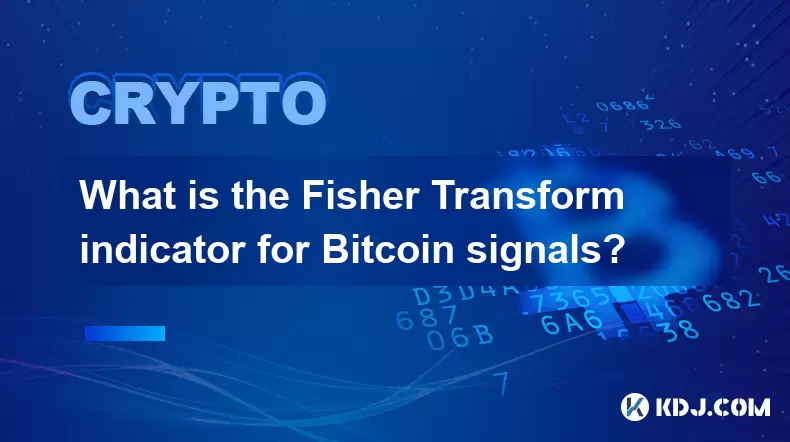-
 Bitcoin
Bitcoin $108,092.5658
-0.99% -
 Ethereum
Ethereum $2,546.4530
-1.12% -
 Tether USDt
Tether USDt $1.0000
0.01% -
 XRP
XRP $2.2676
0.12% -
 BNB
BNB $659.1616
-0.30% -
 Solana
Solana $148.8297
-1.97% -
 USDC
USDC $1.0000
0.02% -
 TRON
TRON $0.2874
-0.30% -
 Dogecoin
Dogecoin $0.1676
-3.64% -
 Cardano
Cardano $0.5765
-1.73% -
 Hyperliquid
Hyperliquid $37.2069
-6.18% -
 Bitcoin Cash
Bitcoin Cash $497.9918
-0.10% -
 Sui
Sui $2.8427
-2.26% -
 Chainlink
Chainlink $13.2689
-2.06% -
 UNUS SED LEO
UNUS SED LEO $9.0541
0.15% -
 Stellar
Stellar $0.2487
-0.92% -
 Avalanche
Avalanche $17.7710
-3.09% -
 Shiba Inu
Shiba Inu $0.0...01167
-1.28% -
 Toncoin
Toncoin $2.7488
-2.80% -
 Hedera
Hedera $0.1559
-2.28% -
 Litecoin
Litecoin $85.8945
-2.48% -
 Monero
Monero $316.0985
-2.09% -
 Dai
Dai $1.0001
0.02% -
 Polkadot
Polkadot $3.3481
-1.83% -
 Ethena USDe
Ethena USDe $1.0000
0.00% -
 Bitget Token
Bitget Token $4.2910
-3.04% -
 Uniswap
Uniswap $7.4131
-0.09% -
 Aave
Aave $280.9266
-2.67% -
 Pepe
Pepe $0.0...09816
-3.18% -
 Pi
Pi $0.4557
-2.29%
What is the Fisher Transform indicator for Bitcoin signals?
Jul 08, 2025 at 04:22 pm

Understanding the Fisher Transform Indicator
The Fisher Transform indicator is a technical analysis tool used by traders to identify potential price reversals in financial markets, including cryptocurrencies like Bitcoin. Developed by John F. Ehlers, this mathematical formula transforms price data into a Gaussian normal distribution, which helps highlight extreme market conditions. In simpler terms, it makes it easier for traders to spot when prices are overbought or oversold.
This transformation is particularly useful in volatile markets such as Bitcoin trading, where sharp price swings can create false signals with traditional indicators. By smoothing out price data and emphasizing turning points, the Fisher Transform aims to provide clearer buy and sell signals.
Key Insight: The Fisher Transform does not predict future prices but highlights high-probability reversal zones based on historical price behavior.
How Does the Fisher Transform Work?
The Fisher Transform applies a logarithmic function to normalized price data, converting it into a form that emphasizes deviations from the mean. This process involves several steps:
- First, a median price value (typically the average of high and low prices) is calculated for each period.
- Next, this value is normalized within a specified lookback window, usually between 10 and 20 periods.
- Finally, the Fisher equation is applied:
Fisher = 0.5 * ln[(1 + X)/(1 - X)], whereXis the normalized value.
The result is a bounded oscillator that oscillates around a centerline at zero. Peaks above a threshold suggest overbought conditions, while troughs below a certain level indicate oversold territory.
Important Note: The output values are not bound symmetrically, so traders often use thresholds like +1.5 and -1.5 to signal extremes.
Applying the Fisher Transform to Bitcoin Trading
Bitcoin's price action is known for its volatility and rapid directional changes, making it an ideal candidate for advanced technical tools like the Fisher Transform. Traders typically apply this indicator to daily or hourly candlestick charts to capture medium-term trends or intraday opportunities.
To implement the Fisher Transform for Bitcoin:
- Choose a charting platform that supports custom indicators, such as TradingView or MetaTrader.
- Add the Fisher Transform script to your chart.
- Set the input parameters, especially the length of the lookback period.
- Observe how the indicator behaves during different market phases — trending, consolidating, or reversing.
When the Fisher line crosses above the signal line (often a lagged version of itself), it may indicate a bullish reversal. Conversely, a cross below the signal line could point to a bearish shift.
Crucial Detail: Always combine the Fisher Transform with other confirming indicators like RSI or volume profiles to avoid false signals.
Interpreting Fisher Transform Signals in BTC Charts
In practice, interpreting the Fisher Transform involves observing divergences, crossovers, and extreme values. For example:
- If Bitcoin’s price is rising but the Fisher Transform starts declining, this divergence might suggest weakening momentum.
- A sharp spike in the Fisher line beyond +1.5 followed by a reversal could indicate an imminent pullback.
- Similarly, a plunge below -1.5 might precede a bounce if buyers step in.
Traders should also pay attention to how the indicator reacts after hitting these extreme levels. Sometimes, the Fisher Transform will remain in overbought or oversold territory for extended periods during strong trends. Therefore, timing entries solely based on extremities without additional confirmation can be risky.
Essential Tip: Use horizontal lines at +1.5 and -1.5 to visually mark key thresholds for quick reference during live trading sessions.
Common Pitfalls When Using the Fisher Transform with Bitcoin
Despite its advantages, the Fisher Transform is not foolproof. Some common issues include:
- Lagging signals: Since the indicator relies on historical data, it may not react quickly enough to sudden price shocks.
- Whipsaw effects: In choppy markets, the Fisher line can generate multiple false signals in quick succession.
- Parameter sensitivity: The choice of lookback period significantly affects performance; what works on one chart may fail on another.
Moreover, Bitcoin’s unique market dynamics — such as halving events, regulatory news, and macroeconomic shifts — can render even the most robust technical tools ineffective if not adapted accordingly.
Critical Warning: Avoid using the Fisher Transform in isolation; always incorporate broader market context and risk management strategies.
Frequently Asked Questions
What timeframes work best with the Fisher Transform for Bitcoin?
While the Fisher Transform can be applied across various timeframes, many traders find success using it on 4-hour or daily charts for swing trading. Shorter timeframes like 15-minute or 1-hour charts may yield more noise, requiring tighter filters or confirmation methods.
Can the Fisher Transform be customized for altcoins?
Yes, the Fisher Transform can be applied to any cryptocurrency, not just Bitcoin. However, due to lower liquidity and higher volatility in some altcoins, adjustments to the lookback period and thresholds may be necessary.
Is the Fisher Transform available on major crypto platforms?
Most modern trading platforms support the Fisher Transform either natively or through community scripts. On TradingView, users can search for “Fisher Transform” in the public indicator library and add it directly to their charts.
Does the Fisher Transform repaint or alter past values?
No, the Fisher Transform is a non-repainting indicator. Once a value is plotted, it remains unchanged, which ensures that backtesting results are reliable and consistent.
Clause de non-responsabilité:info@kdj.com
Les informations fournies ne constituent pas des conseils commerciaux. kdj.com n’assume aucune responsabilité pour les investissements effectués sur la base des informations fournies dans cet article. Les crypto-monnaies sont très volatiles et il est fortement recommandé d’investir avec prudence après une recherche approfondie!
Si vous pensez que le contenu utilisé sur ce site Web porte atteinte à vos droits d’auteur, veuillez nous contacter immédiatement (info@kdj.com) et nous le supprimerons dans les plus brefs délais.
-
 ICNT Échangez maintenant
ICNT Échangez maintenant$0.3182
30.31%
-
 M Échangez maintenant
M Échangez maintenant$0.2011
23.43%
-
 SOLO Échangez maintenant
SOLO Échangez maintenant$0.3788
17.55%
-
 HSK Échangez maintenant
HSK Échangez maintenant$0.7010
17.49%
-
 SHX Échangez maintenant
SHX Échangez maintenant$0.0116
15.42%
-
 COREUM Échangez maintenant
COREUM Échangez maintenant$0.1392
8.59%
- Flashback IPO Coinbase (Coin): le rallye est-il surpris ou en train de commencer?
- 2025-07-08 22:50:12
- Trouble Toonie: repérer les contrefaçons comme un expert
- 2025-07-08 22:50:12
- Coinbase, Crypto Stocks et Ozak AI: sur la vague web3 avec style
- 2025-07-08 23:10:14
- BTC, Snorter Token et The Crypto Scene: Quel est le problème?
- 2025-07-08 23:15:12
- Coins meme, investissement précoce, croissance parabolique: attraper la vague
- 2025-07-08 22:30:12
- Crypto, institutions, BTC & ETH: A New Era Dawns
- 2025-07-08 22:30:12
Connaissances connexes

How to identify a volatility contraction pattern on Bitcoin using indicators?
Jul 07,2025 at 07:28am
<h3>What is a Volatility Contraction Pattern in Bitcoin Trading?</h3><p>A volatility contraction pattern refers to a phase where the...

Do indicators work better on a logarithmic or linear scale for Bitcoin's long-term chart?
Jul 08,2025 at 01:42pm
<h3>Understanding Chart Scales in Cryptocurrency Trading</h3><p>In cryptocurrency trading, particularly for analyzing Bitcoin's long...

What is the Woodies CCI indicator and can it be used for Bitcoin?
Jul 04,2025 at 05:14pm
<h3>Understanding the Woodies CCI Indicator</h3><p>The Woodies CCI indicator is a variation of the traditional Commodity Channel Ind...

How to use indicators to trade the opening range breakout for Bitcoin CME futures?
Jul 05,2025 at 07:35pm
<h3>What Is the Opening Range Breakout Strategy?</h3><p>The opening range breakout (ORB) strategy is a popular trading technique use...

How to use the Relative Vigor Index (RVI) for Bitcoin trading?
Jul 07,2025 at 02:00pm
<h3>Understanding the Relative Vigor Index (RVI)</h3><p>The Relative Vigor Index (RVI) is a technical analysis tool used to assess t...

What does a bearish cross on the Stochastic RSI mean for Bitcoin?
Jul 05,2025 at 07:18pm
<h3>Understanding the Stochastic RSI Indicator</h3><p>The Stochastic RSI (Relative Strength Index) is a momentum oscillator used in ...

How to identify a volatility contraction pattern on Bitcoin using indicators?
Jul 07,2025 at 07:28am
<h3>What is a Volatility Contraction Pattern in Bitcoin Trading?</h3><p>A volatility contraction pattern refers to a phase where the...

Do indicators work better on a logarithmic or linear scale for Bitcoin's long-term chart?
Jul 08,2025 at 01:42pm
<h3>Understanding Chart Scales in Cryptocurrency Trading</h3><p>In cryptocurrency trading, particularly for analyzing Bitcoin's long...

What is the Woodies CCI indicator and can it be used for Bitcoin?
Jul 04,2025 at 05:14pm
<h3>Understanding the Woodies CCI Indicator</h3><p>The Woodies CCI indicator is a variation of the traditional Commodity Channel Ind...

How to use indicators to trade the opening range breakout for Bitcoin CME futures?
Jul 05,2025 at 07:35pm
<h3>What Is the Opening Range Breakout Strategy?</h3><p>The opening range breakout (ORB) strategy is a popular trading technique use...

How to use the Relative Vigor Index (RVI) for Bitcoin trading?
Jul 07,2025 at 02:00pm
<h3>Understanding the Relative Vigor Index (RVI)</h3><p>The Relative Vigor Index (RVI) is a technical analysis tool used to assess t...

What does a bearish cross on the Stochastic RSI mean for Bitcoin?
Jul 05,2025 at 07:18pm
<h3>Understanding the Stochastic RSI Indicator</h3><p>The Stochastic RSI (Relative Strength Index) is a momentum oscillator used in ...
Voir tous les articles

























































































